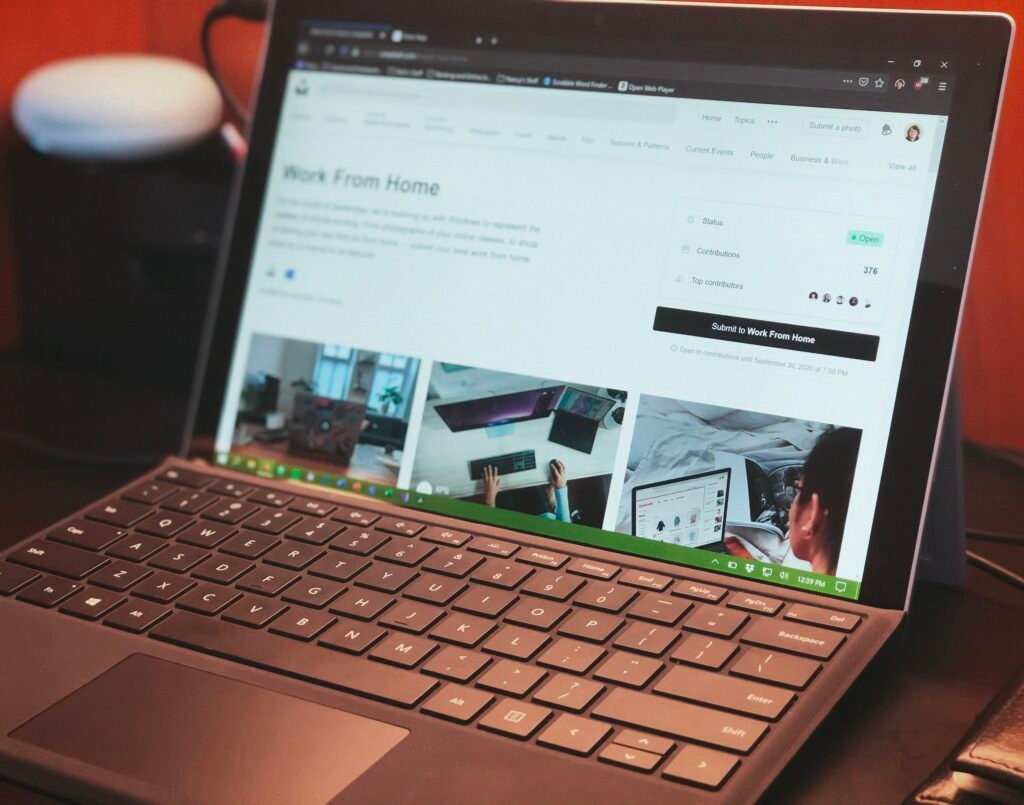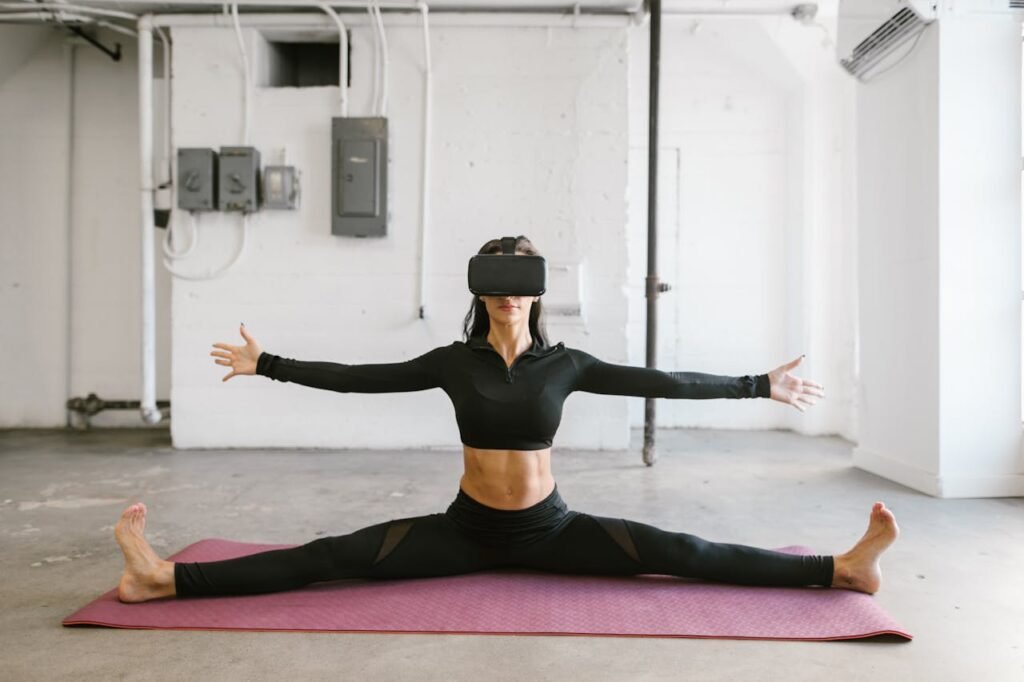The Evolution of Remote Work
The landscape of work has undergone a significant transformation over the past few years, particularly with the rise of remote work. As businesses adapted to the unprecedented challenges posed by global events, telecommuting rapidly became a mainstream practice. This shift has redefined traditional office environments, leading many organizations to embrace flexible work arrangements that allow employees to perform their duties from home or other locations outside a conventional office setting.
In recent years, advancements in technology have played a crucial role in facilitating this change. The surge in high-speed internet access, coupled with the proliferation of user-friendly software applications, has enabled seamless communication and collaboration among remote teams. Emerging tech gadgets, including high-definition webcams, noise-canceling headphones, and portable devices, have further enhanced the remote working experience, making it easier for workers to engage with colleagues and manage their tasks effectively from any location.
Moreover, the evolution of project management tools and cloud-based platforms has revolutionized how teams coordinate their efforts. The importance of these technological solutions cannot be overstated, as they contribute to heightened productivity and facilitate real-time updates and information sharing. Smart devices and AI-driven applications are increasingly utilized to streamline workflow, ultimately allowing remote workers to maintain a high standard of performance without the constraints of a physical office.
As we look towards the future, it is essential to recognize that the trend of remote work is likely to continue evolving. Innovations in emerging tech gadgets will undoubtedly play a pivotal role in shaping this dynamic work environment, providing remote workers with the tools necessary to thrive. Through the integration of cutting-edge technology, businesses can expect to see improvements in collaboration, communication, and overall employee well-being.
Why Technology Matters for Remote Workers
The advent of remote work has transformed the professional landscape, necessitating an adaptation to new methods of collaboration and communication. As remote workers navigate the complexities of efficient workflow from various locations, the importance of incorporating emerging tech gadgets cannot be overstated. These innovative tools play a crucial role in enhancing productivity, facilitating seamless communication, and improving overall work-life balance.
First, the integration of advanced technology significantly boosts operational efficiency. Emerging tech gadgets designed for remote use often feature enhanced specifications that allow for faster processing and multitasking capabilities. For instance, high-performance laptops and tablets equipped with the latest processors enable workers to handle multiple applications simultaneously without lag, thus streamlining complex tasks. In this context, investing in high-quality tech gadgets becomes an essential step for remote professionals seeking to maximize their productivity.
Furthermore, effective communication is vital for any team, especially for those who operate in a virtual environment. Emerging technologies such as video conferencing tools, collaborative platforms, and project management apps foster better interactions among colleagues. With these gadgets, remote workers can seamlessly engage in discussions, share files, and track project progress in real-time, eliminating the common barriers associated with physical distance.
Collaboration is another critical aspect where technology plays a pivotal role. Innovative gadgets like interactive displays and smart whiteboards enhance teamwork by enabling brainstorming sessions and idea exchanges that mimic in-person meetings. This level of engagement not only enhances project outcomes but also nurtures a sense of community among team members, which is often lacking in remote work settings.
Lastly, the right technology can help maintain a healthy work-life balance, a challenge many remote workers face. Gadgets that allow for time management, task prioritization, and break reminders ensure that professionals do not fall into the trap of overworking from home. Thus, the strategic use of emerging tech gadgets can deliver substantial benefits, enabling remote workers to navigate their responsibilities efficiently while preserving their personal well-being.
Innovative Communication Tools
As the landscape of remote work continues to evolve, so too does the need for effective communication among teams. Emerging tech gadgets play a pivotal role in bridging the gap between colleagues and clients, regardless of geographical distance. Advanced virtual reality (VR) headsets are at the forefront of this shift, allowing users to immerse themselves in a virtual environment that mirrors face-to-face interactions. These headsets not only facilitate meetings but also enable team-building exercises and collaborative projects in a 3D space, fostering a sense of presence that traditional video calls cannot replicate.
Moreover, AI-driven conferencing devices are revolutionizing the way remote teams connect. These gadgets utilize artificial intelligence to enhance audio and video quality, adjusting settings for optimal performance based on the environment. They can automatically focus on the speaker, reducing distractions and making it easier for team members to engage in discussions. This focus on clarity and user experience is essential in maintaining productivity and collaboration in remote settings.
Smart digital assistants are another category of emerging tech gadgets that greatly streamline communication. By integrating with various communication platforms and tools, these assistants can schedule meetings, send reminders, and even transcribe discussions in real-time. The ease of use and accessibility of such gadgets empower remote workers to manage their time more effectively and ensure that no important conversations are overlooked.
Incorporating these innovative communication tools into remote work setups not only enhances collaboration but also transforms the overall working experience. As organizations continue to embrace remote work arrangements, adopting advanced gadgets that support seamless interaction will undoubtedly contribute to improved teamwork and productivity across distributed teams.
Ergonomic Home Office Essentials
As remote work continues to gain prominence, the importance of creating an ergonomic home office setup cannot be overlooked. Ergonomics plays a vital role in enhancing comfort and reducing the risk of strain or injury, particularly for individuals who spend long hours in front of a computer. Integrating emerging tech gadgets into one’s workspace can significantly bolster productivity and overall well-being.
Among the most effective ergonomic solutions are adjustable standing desks. These gadgets allow users to switch between sitting and standing positions, facilitating movement throughout the day and alleviating the discomfort associated with prolonged sitting. Many models now come equipped with smart technology, enabling users to set reminders for scheduled position changes, thus ensuring a more dynamic work routine.
Moreover, ergonomic chairs have become a staple in modern home offices. Designed with adjustable features such as lumbar support, armrests, and seat height, these chairs promote proper posture. Emerging tech gadgets in this category often include built-in sensors that monitor posture and provide real-time feedback, ensuring that users maintain a healthy alignment while working.
In addition to desks and chairs, innovative keyboard and mouse solutions are essential for any ergonomic setup. Keyboards that feature a split design can reduce wrist strain, while vertical mice are crafted to align with the natural position of the hand, promoting comfort during extended use. Some of these gadgets even incorporate wireless features, minimizing desk clutter and enhancing mobility within the workspace.
Implementing these ergonomic home office essentials will not only foster a more comfortable working environment but also directly contribute to improved productivity. By investing in emerging tech gadgets that prioritize health and comfort, remote workers can cultivate an effective work atmosphere that supports their physical and mental well-being.
Portable Technology for Mobility
As the remote work culture continues to thrive, the demand for portable technology has surged. Emerging tech gadgets designed for mobility have become essential tools for professionals who need to maintain productivity while traveling. Lightweight laptops are at the forefront of this evolution, offering a blend of performance and portability. Devices such as the latest ultrabooks exemplify this trend, providing powerful processors, long battery life, and sleek designs that easily fit into a briefcase or backpack. These laptops are engineered to handle demanding tasks while remaining easy to carry, making them ideal for remote workers on the go.
In addition to lightweight laptops, portable monitors have emerged as a critical accessory for remote workers. These monitors enhance the workspace by allowing multiple screens to be used simultaneously, which can significantly boost productivity. Compact and easy to set up, these monitors connect via USB-C or HDMI, ensuring a seamless transition from one environment to another. Professionals can effortlessly extend their desktop space, facilitating multitasking in various work settings, whether in a coffee shop or a hotel room. Some models even feature touch capabilities, further enhancing user experience and interactivity, effectively supporting tasks that require precision.
Moreover, the significance of high-capacity power banks cannot be overlooked. With many gadgets requiring a constant power supply, these portable charging solutions are indispensable for remote workers who may not always have access to traditional power outlets. Emerging tech gadgets like advanced power banks come equipped with multiple charging ports and high output capacities, ensuring that laptops and other devices stay charged throughout the day. With the compact size and lightweight design, these power banks can easily be carried alongside other essential gadgets, providing peace of mind and uninterrupted workflow. The combination of lightweight laptops, portable monitors, and high-capacity power banks represents a new wave of technology that empowers remote workers to thrive regardless of their location.
Smart Home Integration
As remote work becomes increasingly prevalent, the integration of smart home devices plays a pivotal role in enhancing the work-from-home experience. The emergence of various tech gadgets tailored for home office setups has revolutionized how individuals manage their work environment, making it more comfortable and efficient. Among these gadgets, smart speakers, automated lighting, and smart thermostats stand out for their significant contributions to creating a conducive workspace.
Smart speakers, such as those powered by artificial intelligence, offer a hands-free solution for remote workers. These devices can assist in managing tasks, setting reminders, and even controlling other smart gadgets through voice commands. This allows users to maintain focus on their work without the need for constant interaction with their computer systems. Additionally, smart speakers can integrate with various platforms, enabling seamless access to information and productivity tools, thus streamlining workflows.
Automated lighting systems are another essential aspect of smart home integration that can greatly enhance productivity. These gadgets allow users to customize their lighting based on their specific needs throughout the day. By adjusting brightness and color temperature, remote workers can ensure optimal lighting conditions that help reduce eye strain and create a pleasant atmosphere for concentration. Furthermore, some systems can sync with daily routines, automatically dimming or brightening as the workday progresses.
In addition to smart speakers and lighting, smart thermostats contribute to the overall energy efficiency of a home office. These gadgets enable users to monitor and manage their home’s temperature remotely, ensuring a comfortable work environment while reducing energy consumption. By learning user preferences over time, smart thermostats can automatically adjust settings, thereby optimizing both comfort and energy savings.
Overall, the integration of these emerging tech gadgets into daily work routines creates a balanced and productive remote working setup that fosters efficiency while maintaining comfort.
Virtual Reality (VR) and Augmented Reality (AR) Tools
The workplace continues to evolve, particularly as remote work becomes more prevalent. Emerging tech gadgets such as Virtual Reality (VR) and Augmented Reality (AR) tools are playing a transformative role in how remote workers engage with their teams and perform their tasks. These innovative technologies are effectively removing geographical barriers, allowing for seamless communication and collaboration among remote employees.
VR technology offers immersive virtual environments for meetings and presentations, enabling participants to feel as though they are truly in the same room, regardless of their physical locations. Such tools facilitate a sense of presence that traditional video calls cannot fully replicate. Remote teams can use VR to host virtual meetings where participants can interact with 3D models, share documents, and brainstorm ideas in a simulated space. This level of engagement enhances communication and fosters creativity, contributing to more productive sessions.
On the other hand, AR technology overlays digital information onto the real world. For remote workers, AR applications can be particularly beneficial for interactive training sessions. These tools provide a hands-on approach to learning by allowing users to visualize complex tasks in real time, improving skills and knowledge retention. Furthermore, through AR, colleagues can collaborate on projects in real-time, viewing the same high-resolution 3D models or prototypes regardless of their actual locations. This capability empowers teams to innovate collaboratively while maintaining the flexibility associated with remote work.
As emerging tech gadgets continue to develop, the integration of VR and AR into remote work practices will undoubtedly evolve. Organizations that leverage these technologies stand to gain a competitive advantage by boosting teamwork, enhancing creativity, and transforming how employees interact with their work and each other.
Wearable Tech for Health and Wellness
The increasing demand for remote work has resulted in a shift towards integrating emerging tech gadgets into everyday life, particularly wearable technology designed to promote health and wellness. These devices, including fitness trackers and smartwatches, provide users with insights into their physical well-being while also encouraging healthy habits and lifestyle changes vital for maintaining optimal productivity.
Fitness trackers, for instance, monitor various metrics such as heart rate, steps taken, and sleep patterns, thereby enabling remote workers to gain a comprehensive understanding of their physical health. By utilizing these gadgets, individuals can set fitness goals, track progress, and stay motivated, all from the comfort of their home office. Furthermore, many of these devices feature reminders to encourage users to take breaks, a critical factor when working remotely for extended hours. This integration of emerging tech gadgets into daily routines ultimately helps counteract the sedentary lifestyle that may develop in home working environments.
Smartwatches have also emerged as valuable tools for remote workers seeking to enhance their well-being. These devices not only provide health monitoring features but also offer notifications for messages and calls, allowing individuals to manage their workload effectively without compromising their health. The convenience factor of having vital information readily available on their wrist plays a significant role in fostering healthier work-life balance for remote employees.
Additionally, meditation devices, such as headbands and guided meditation apps, cater to the mental wellness of remote workers. These gadgets promote mindfulness and relaxation, which are essential components for reducing stress and preventing burnout in a remote work setting. By incorporating these emerging tech gadgets into their daily routines, remote workers can cultivate a healthier lifestyle, thereby enhancing their productivity and overall well-being.
Future Trends: What to Expect in 2025
As we look towards 2025, the landscape of remote work technology is poised for significant transformation driven by the rapid advancement of emerging tech gadgets. It is anticipated that the demands of remote work will catalyze innovative solutions designed to enhance productivity, collaboration, and overall employee wellbeing. One prominent trend will likely be the proliferation of smart home office environments equipped with automated systems that adjust lighting, temperature, and even sound to suit the needs of the individual worker.
Additionally, the integration of augmented reality (AR) and virtual reality (VR) into our daily work routines is anticipated to become commonplace. These technologies will facilitate immersive collaboration among remote teams, allowing for realistic interactions irrespective of geographical boundaries. With the help of these emerging tech gadgets, remote workers will be able to engage in virtual meetings that feel significantly more personal and interactive than traditional video calls.
Moreover, artificial intelligence (AI) is expected to play a crucial role in shaping the future of remote work technologies. AI-driven applications are predicted to optimize task management and productivity tracking, allowing employees to focus on their core responsibilities without the distraction of administrative burdens. Additionally, AI-enabled personal assistants may also help improve work-life balance by automatically scheduling breaks and encouraging time for relaxation.
As organizations recognize the potential benefits of investing in cutting-edge tech gadgets, there is a growing likelihood that they will adopt flexible policies aimed at prioritizing employee satisfaction and performance. By 2025, companies may introduce hybrid models of work that emphasize autonomy while still providing necessary support through these innovations. The ongoing evolution of the remote work environment will hinge on the willingness of companies to adapt and invest in emerging technologies that facilitate a seamless, efficient, and engaging work experience.



